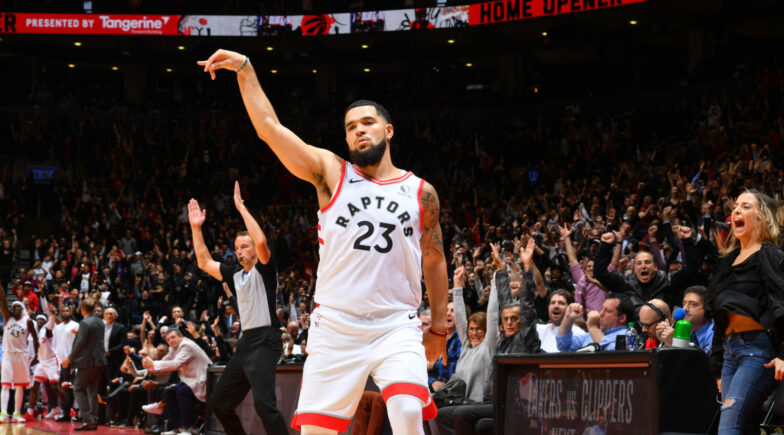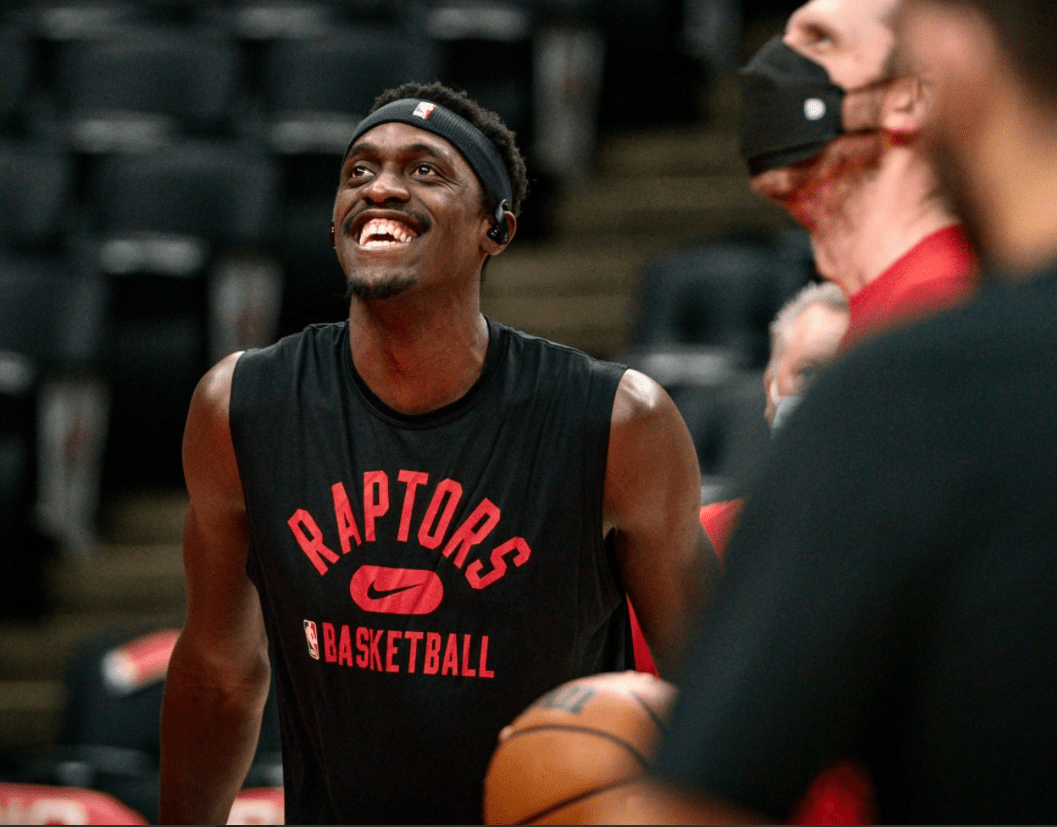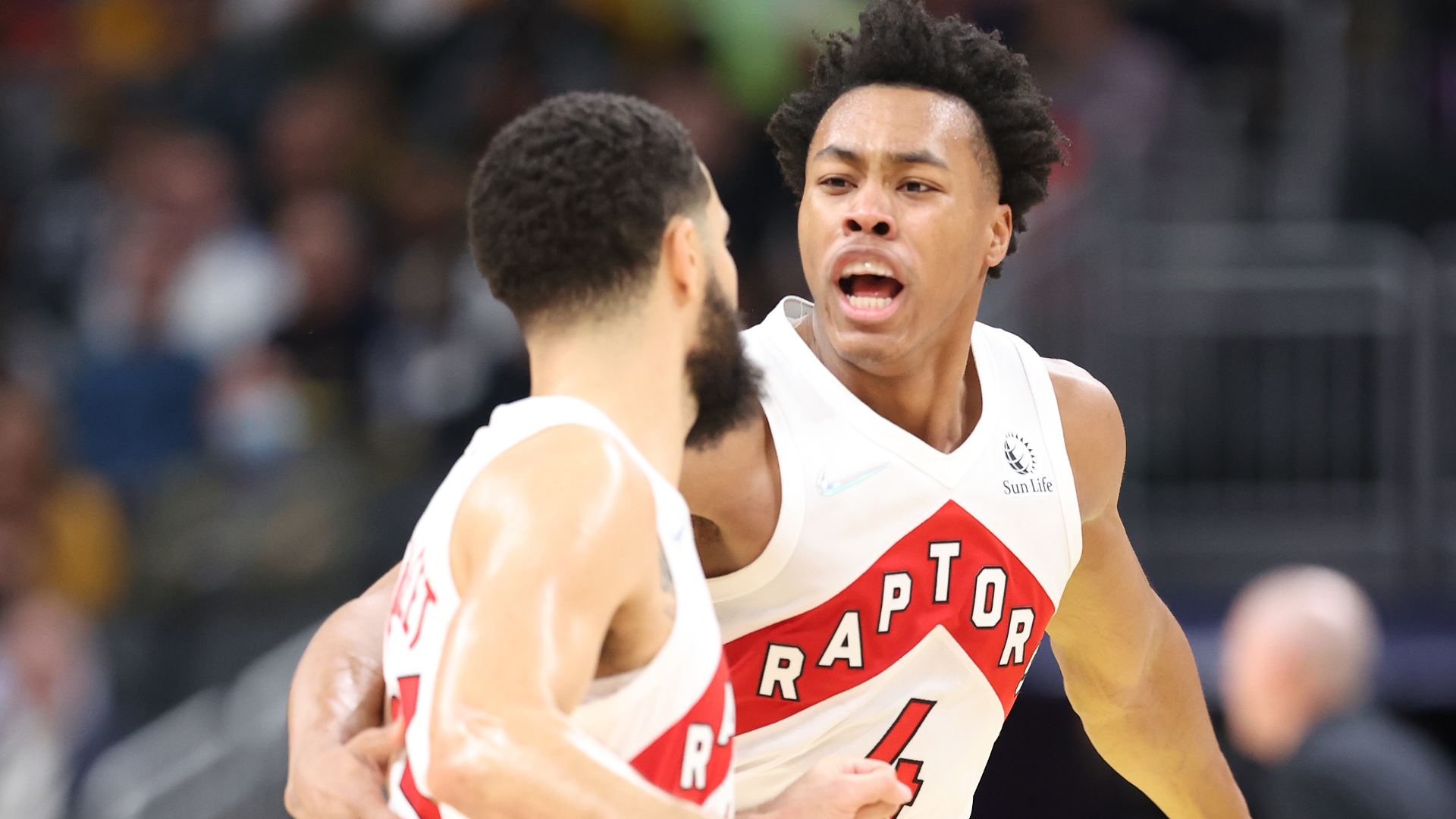I have a long history of believing in — and being right about — Fred VanVleet. Let’s rehash.
In December of 2018, long before it was an accepted fact across the league, let alone among Raptors’ commentators, I wrote that he was an elite NBA defender. Later, during the NBA Finals, I re-upped my argument about VanVleet, adding that modifier (elite) to both sides of the ball. I accurately predicted his contract based on his incredible output. I called him Toronto’s best player early last season, and that’s largely been true ever since. I correctly predicted that VanVleet would ably replace Kyle Lowry in running the offense, but the team lacked a replacement for VanVleet himself.
I say this only to establish that I know what I’m talking about when it comes to VanVleet. So, let’s go out on a limb and say this: Fred VanVleet is going to be an All Star this season.
Here’s why.
Let’s first establish what an All-Star player looks like before we dive into why VanVleet fits the bill. Since 2018-19, there have been 37 guards voted to play in All-Star games. Excluding starters — I’m not arguing VanVleet should be an All-Star starter, nor has he had the output of one — there have been 25 guards. Among those players, the average All-Star guard of the past few seasons looks suspiciously like VanVleet. Using Basketball Reference to look at base numbers that generally drive guard play (points, assists, steals), an efficiency stat (true shooting percentage), and an advanced catch-all metric (Box Plus/Minus), VanVleet appears almost identical to the average All-Star guard.
The average non-starter All-Star guard since 2018-19: 22.0 points per game, 6.8 assists per game, 1.3 steals per game, 3.6 BPM, and 57.9 percent true shooting.
Fred VanVleet: 20.1 points per game, 6.7 assists per game, 1.6 steals per game, 3.6 BPM, and 57.2 percent true shooting.
In the words of superstar Samson Folk, thaaaaat’s preeetttty good!
For VanVleet though, as with Toronto’s former All-Star mainstay in Kyle Lowry before, numbers are almost superfluous to the case. They don’t capture the essence of the player, are pale shades of description, like words trying to capture emotions.
Say, for example, that VanVleet’s on/off differential, when pro-rated for pace, is in the 100th percentile leaguewide, at +23.1. It is second in the league, behind only Nikola Jokic. What does that really mean?
It means the Raptors collapse without VanVleet playing. Like, turn from from one of the best teams in the league with him playing to one of the worst with him sitting. They make far, far more shots when VanVleet plays, and opponents make far, far more when he sits. It’s uncanny; Lowry had the same impact for the Raptors for years. He was the heart of the team. And when he left, the Raptors found a transplant immediately.
Take, for example, another few numbers: VanVleet takes 8.5 threes per game and makes 39.7 percent of them, both team highs. Set aside the numbers. He’s one of only two players to lead his team in both threes attempted and three-point accuracy (Seth Curry is the other), and he does it as his team’s only real lead initiator, taking more threes off the dribble than off the catch. It’s arguable, based on that, that no player plays a more significant role in spacing the floor for his team. And at the same time — as the team’s only point guard — he carries one of the largest offensive burdens in the league, with the 11th-highest time of possession leaguewide. Meaning he’s the both the spacer and the offensive initiator for whom the floor is spaced!
He is both bow and arrow, king’s guard and king.
There have been some small knocks on VanVleet’s game in the past: finishing and creation. Both have likely been as a result of his size at the point guard spot. VanVleet had never shot higher than 56.7 percent at the rim coming into this season, graded by Cleaning the Glass as 18th percentile both seasons previously. Since joining the league, a hearty 12.96 percent of his two-point attempts have been blocked. Similarly, VanVleet has previously been subpar at creating for his teammates inside the arc. He did compile plenty of assists in previous years, but many of them came on passes to jumpers; in 2019-20 and 2020-21, he created almost as many triples for teammates as twos. His assists weren’t always value-added. All that has changed this season.
At the rim, VanVleet has become far choosier in his attempts, thus meaning those layups he does take are much likelier to go in. His accuracy from 0-3 feet is a career-high 63.3 percent, right in line with Chris Paul’s career average. He has been blocked on a miniscule 8.37 percent of two-point attempts. As a creator, almost twice as many passes lead to two-point attempts for teammates versus threes. He already has more passes into the restricted area this year versus last, and he has almost as many passes into the key. He’s accomplished both by becoming one of the best midrange artists in the league, one of 10 players to be shooting three or more two-point pull-ups a game and shooting 49 percent or better on them. That’s a baseline for an offensive possession, and if defenders leave VanVleet open from the midrange, commit to defending the rim, his passes, he’ll torch them. If they open up the rest of the court, that’s when his finishing and passing take over.
Those are numbers, though. In words, his weaknesses have become strengths. And his strengths? They remain overpowered — in need of nerfs.
VanVleet is currently the most efficient spot-up shooter in basketball, scoring an absurd 1.52 points per possession. If his midrange fluency represents the team’s offensive floor, then his spot-up shooting is each possession’s ceiling. He’s become a master of getting open without the ball. He runs the furthest per-game distance in the league on the offensive end, jetting around screens, moonwalking back when teams overplay him, running the baseline, and always making himself available for passes. If his work with the ball is the blood flowing through the team’s veins, then his work without the ball comprises the veins themselves, the structure within which the whole thing exists and flows. When VanVleet isn’t playing, Toronto loses its semblance of structure, has little chance of creating good looks in the half court with any consistency.
All this talk of offense doesn’t even mention perhaps VanVleet’s greatest strength of all. It was what made me realize he was a future star: his defense. He’s been fantastic on that end for years and years now, but it’s arguable that this season has been his best work ever. FiveThirtyEight’s RAPTOR says so. But beyond the catch-all metrics or the on/offs, which all say VanVleet is doing the best regular season work of his career on defense, he’s shouldered more a burden than ever before. (He runs the sixth-furthest of any player per game on the defensive end, too, in addition to his marathon work on offense.)
VanVleet remains one of the league leaders in deflections. He is the best rim protector in the league among guards (and significantly better than many centers, given his heavy-as-anvil hands). He is one of the best roll-taggers in the league, always getting to his spots early and meeting offensive players on the ground before they can overpower him in the air. To call him one of the best pound-for-pound defenders in the league is frankly an insult; he is one of the best defenders, full stop, at any position at any size. When VanVleet isn’t playing, Toronto loses its semblance of structure on the defensive end, allows blow-bys, doesn’t rotate or help, can’t play its patented scrambling defense. He is the heart that beats on both ends. You can’t put a number on that.
After all, what is an All Star? It’s a player who is more valuable, more talented, a more significant contributor to winning than his peers. VanVleet personifies those qualities this season. He is consistency for the Raptors; he offers the high highs and ensures the lows aren’t too low. He is most responsible for keeping the Raptors in the playoff hunt. He has been a star, whether compared to his teammates or his opponents around the league. He is his team’s leader on and off the court. He has the numbers and the narrative, is the lead singer and the drummer.
Add it all together, and VanVleet currently is enjoying the third-highest WAR in the league, according to FiveThirtyEight’s RAPTOR. That’s a number, though. What does it mean in words? That Fred VanVleet is a fucking All Star.



